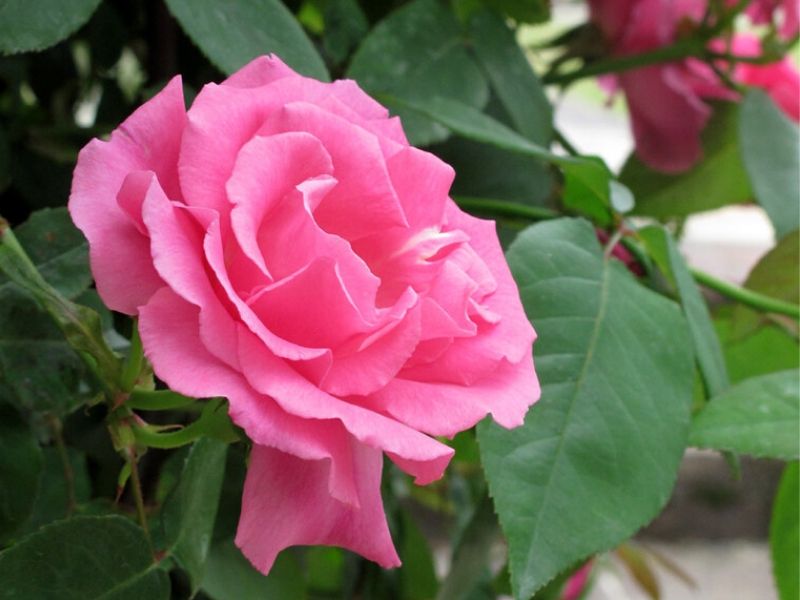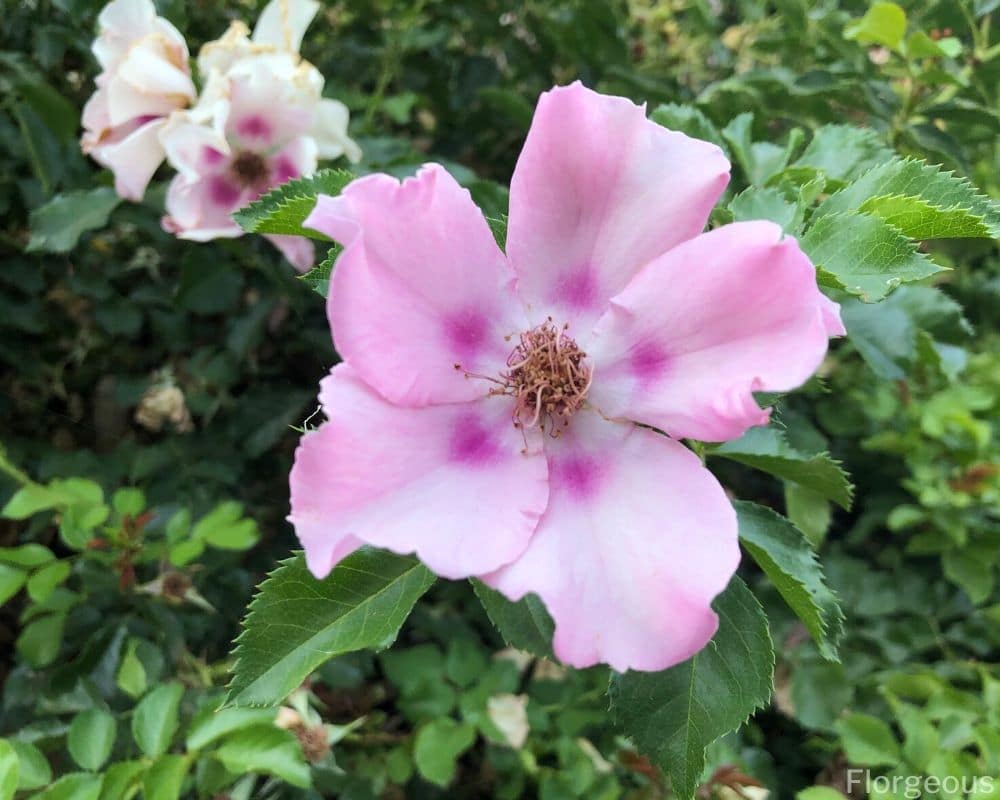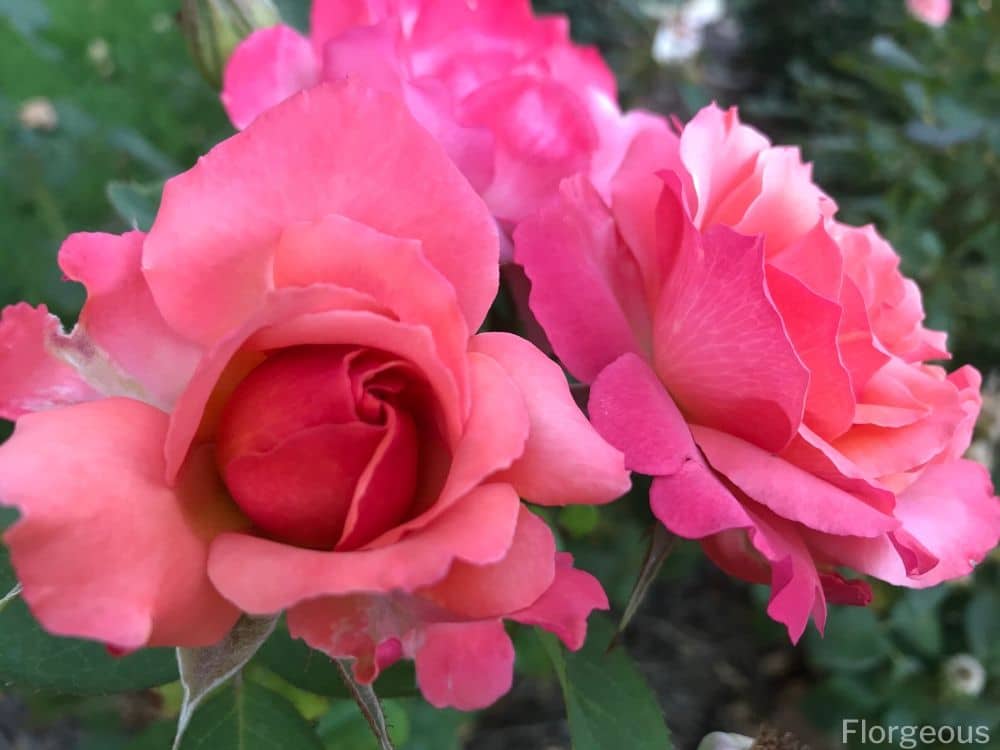Pink roses, often perceived as the most feminine and delicate of all roses, have endured for millions of years, serving as the perfect gift to symbolize resilience and enduring beauty. There has always been some truth to the association of pink roses with femininity, as the color is mostly preferred by young girls and women alike, and the blushed petals of the flower seem to always need to be handled gently.
Because of this connotation, people find it hard to think of pink roses as the tough flowers that they really are. Pink roses have existed for millions of years, enough for them to be considered as the ancestor of all roses. They have endured the harshest of climates and they still persist today, being cultivated with the latest hybridization technology.

Breeders and aficionados love the pink in roses that even if there already exist hundreds, if not thousands, of roses in shades of pink, they still seek to create and have new varieties of roses in this color. We love them in the garden and we love them even more in our bouquets.
Truly, the pink rose possesses many endearing qualities that make it one of the most popular flowers and this comprehensive guide will explore the charming nature of the pink roses that keeps us fascinated.
History of Pink Rose

Species roses, one of the three classifications of roses, are also called wild roses because they naturally exist and are considered the most basic form of roses. Their flowers, contrary to the iconic image of roses, are usually five-petalled and most of them, if not all, are naturally pink (1).
Archaeologists even found a fossilized rose that dates back around 40 million years ago and the color of the petals is pink! Pink roses were also illustrated in early drawings of the ancient world.

An example is a Minoan fresco where small five-petalled pink roses were drawn (2). Gardens of known collectors in the 1800s are also filled with different various shades of pink roses.
Because they are the dominant colored-roses in nature, pink roses were the first ornamental roses to be cultivated. One of the pioneers rose hybrids was the gallica rose, ‘Officinalis’. It has pink semi-double flowers that became popular upon its introduction to France from the Middle East in the 1300s.

Rose cultivation did not flourish until the 18th century with the arrival of China roses and it was during this period when new shades of pink were seen in roses such as pale pink, salmon, and bright fuchsia.
Through the hybridization techniques that were developed, pink roses have been altered to become repeat bloomers so gardeners and enthusiasts could enjoy their bloom longer.

What Are Different Varieties of Pink Rose?
Rosa ‘Zephirine Drouhin’

This rose plant is also called ‘Charles Bonnet’ or ‘Thornless Rose’ because of the smooth stems. It bears showy large deep pink flowers with visible venation which are adored by garden passers-by and bees alike.
It grows tall, usually up to 5 meters and is not recommended for container planting. Bizot bred this unique pink rose in 1868.
Rosa ‘Bella’

This particular species rose is called Rosa ‘Bella’, sometimes might be confused with ‘Bella Rosa’ which is a floribunda rose.
Rosa ‘Bella’ is a species rose and its name literally translates to ‘beautiful’ because its flower is a striking medium pink with up to 7 petals only. The plant is almost thornless with bright green foliage.
Rosa ‘Eden’

Also known as ‘Pierre de Ronsard’, this rose plant grows as a perennial shrub up to four meters in height. It’s a white and light pink climbing rose.
The fragrant showy flowers are mostly cream with light pink shading and are globular in shape. This rose plant was bred by Marie-Louise Meilland in the 1980s.
Rosa ‘Open Arms’

The more commonly known ‘Coral Seas’ is a miniature rambling rose that blooms throughout the summer as it prefers full sun.
The musky-smelling flowers bloom a soft pink that fades to a pale color and the stamens are a distinct golden hue. The plant was introduced by Christopher Warner in 1995.
Rosa ‘Mary Rose’

The blossoms of this rose are large full heads in medium pink. They grow in clusters of up to 40 petals each head. The shrub is shade tolerant with thick green leaves. It was hybridized by David Austin in 1938.
Rosa ‘Kazanlik’

Also known as ‘Trigintipetala’, this rose was one of the first Damascus roses introduced in 1612.
As the name suggests, the flower has thirty petals in double form and comes in loose mild pink color. This flower is known to be used in perfumery because of the classic old rose scent.
Rosa ‘Orchid Romance’

This rather new rose was hybridized by William Radler in 2011. It is a disease-resistant rose that has a repeat blooming habit and its spectacular flowers often burst in striking pink that soften to a paler shade. The flowers have a citrusy scent and the leaves are glossy and dark green.
Rosa ‘Royal Jubilee’

The globular flowers seem to keep a secret by only slightly showing the stamens. They are a beautiful, elegant deep pink that is lighter on the underside of the petals.
The fruity scented blossoms grow on wiry stems that have dark green leaves with hints of red on the edges. David Austin developed this gorgeous rose in 2012.
Rosa ‘Queen of Sweden’

‘Queen of Sweden’ is another creation by David Austin in 2004 which is known for the cup-shaped flowers that start as soft-apricot pink gradually blooming to soft pink.
‘Queen of Sweden’ is the symbol of the Treaty of Friendship and Commerce between Sweden and Great Britain.
Rosa ‘Madame Isaac Pereire’

These hot pink roses are known for the luxurious scent of a true rose. Although quite susceptible to black spot or rust, this plant bears large cupped flowers in deep fuchsia which are in-demand as cut flowers used in bouquets and vase display. It was one of the first bourbon hybridized by Garcon in 1881.
Rosa ‘Emily Bronte’

The flat blooms of ‘Emily Bronte’ are soft pink on the outer petals and grows rich apricot moving towards the center. They have a strong tea scent with a citrusy hint.
The plant grows upright but has a bushy characteristic. This pink rose was named after the celebrated novelist and was most recently developed by David Austin in 2018.
Rosa ‘New Dawn’

Also known as ‘Everblooming’, this rose plant has delicate pale pink flowers aging to white that can be seen during the late spring. Despite the subtle appearance, this plant is hardy and fast-growing but prefers partial shade. The tall shrub was hybridized by the Somerset Rose Nursery in 1930.
Rosa ‘Rural England’
‘Rural England’ is a rambler rose that was bred by Amanda Beales in the early 2000s. The plant produces clusters of large medium-pink blossoms almost the entire year, except during the cold of winter. These flowers smell sweet and spiced and are definitely head-turners in the garden (3).
Pink Rose Meanings and Symbolism

Different types of flowers have their own meanings. Because of their natural abundance in the wild, the pink roses are the first roses that people have come to love.
The cultures of the ancient Greeks and Romans, the Middle East, the Victorian period and even the present day all have one thing in common, the appreciation for pink roses. The subtlety and independence that the pink rose embodies are what we love most about it.

For the Greeks and Romans, the pink flower is a symbol of Aphrodite or Venus as represented in the famous Botticelli painting, The Birth of Venus, where the pink roses were illustrated to be showered upon the beautiful Venus, goddess of love (4).
In the Talmud collection of writings of the Jews, it was said that pink roses are the flowers that bloom in Jerusalem. That is why this gentle flower became a symbol of paradise and healing.

With the many varieties of pink roses that have been developed over time, different meanings have also been associated to appreciate this lovely blossom. And the different shades of pink also came to have their own meaning.
Light pink roses connote gentleness and admiration, the common pink rose color depicts first love, congratulatory or a cheerful wish for a grieving friend, while the deep pink rose is an expression of appreciation and gratitude.

In the modern day, pink roses have become a general symbol of elegance and appreciation, sure to bring a smile to everyone’s face. There is even a scientific study on how pink roses affect people at work.
The pink roses, being an excellent representation of a calming environment, brought a physiological relaxing effect to people who are exposed to them in the office (5).
Furthermore, when it comes to birth flowers, roses represent month June.
Finally, if you truly love pink color, don’t forget to check our list of beautiful pink flowers.
Up Next: Red Roses: History, Names and Meanings
References
Reference list:
(1) Rebecca Bowen. “Native Roses aren’t Red”. Pennsylvania Department of Conservation and Natural Resources. 2018. Retrieved from https://www.dcnr.pa.gov/GoodNatured/pages/Article.aspx?post=31.
(2) Cartwright, M. “Minoan Frescoes.” Ancient History Encyclopedia. 2012. Retrieved from https://www.ancient.eu/article/390/minoan-frescoes/.
(3) “Plants Database.” National Gardening Association. 2019. Retrieved from https://garden.org.
(4) Beckett, W. and Wright, P. “The Story of Painting”. 2000. Dorling Kindersely. 736 p.(5) Ikei, Harumi et al. “The physiological and psychological relaxing effects of viewing rose flowers in office workers.” Journal of physiological anthropology vol. 33,1 6. 8 Mar. 2014, doi:10.1186/1880-6805-33-6 – link
Close







